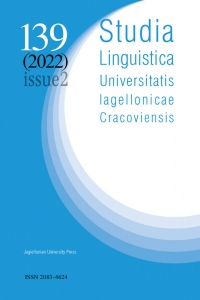The higher numerals in Ossetic
The higher numerals in Ossetic
Author(s): Ronald I. KimSubject(s): Anthropology, Lexis, Semantics, Historical Linguistics, Philology, Prehistory
Published by: Wydawnictwo Uniwersytetu Jagiellońskiego
Keywords: Ossetic; Iranian; Indo-Iranian; numerals; vigesimal counting;
Summary/Abstract: This paper examines the formal prehistory of the cardinal numerals above “ten” from Proto-Iranian to Ossetic. Despite the widespread adoption in Ossetic of a vigesimal system of counting and semantic shift of “thousand” and “ten thousand” to generalized terms for large amounts, the evolution of these numerals may be reconstructed in detail. Noteworthy features are the general conservatism of the teens; retention of rtin ‘thirty’ (cf. Vedicj ‘twenty’, the nasal from Proto-Indo-Iranian in Digor ins ppors*, Iron cyppurs ‘Christmas’viṁśatí-, triṁśát-); survival of an older variant of ‘forty’ in Digor c < ‘(festival) of forty (days)’; and extension of Proto-Iranian *-āti from ‘many, much; very’, Iron bir‘seventy’ and ‘eighty’ to ‘fifty’ and ‘sixty’. Digor be(u)r continues a thematized plural *baiwar-ai of Proto-Iranian *baiwar/n- ‘ten thousand’; ) ‘countless number, myriad’rʒ (rz ‘hundred’ and dif s < ‘thousand’ also go back to preforms in *-ai, they were either remodeled after *baiwar-ai or generalized from duals, e.g. *duwai ćatai ‘two hundred’. The limited evidence for earlier stages of the language is given full consideration, including Sarmatian onomastics, word lists in early modern European sources, and the testimony of loanwords.
Journal: Studia Linguistica Universitatis Iagellonicae Cracoviensis
- Issue Year: 139/2022
- Issue No: 2
- Page Range: 71-89
- Page Count: 20
- Language: English

